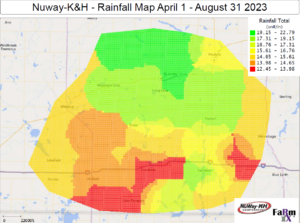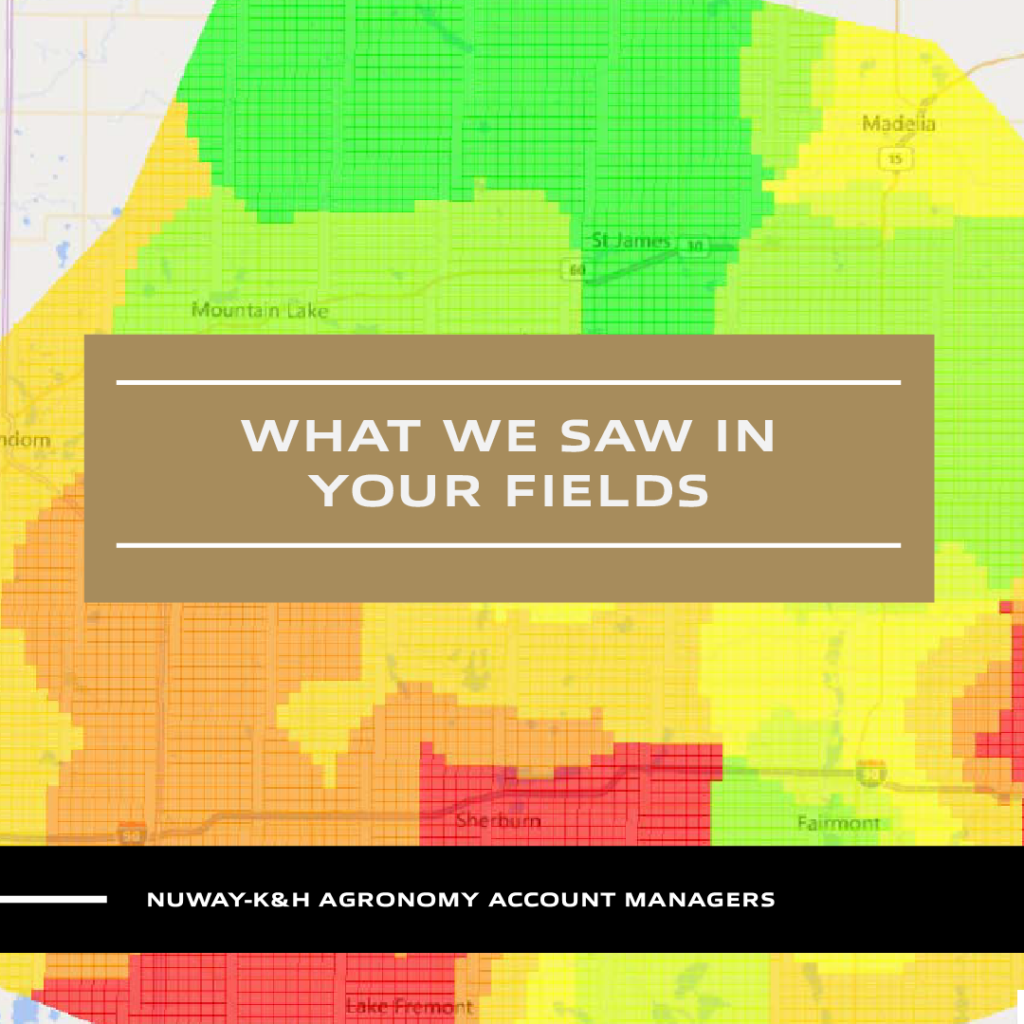NuWay-K&H AGRONOMY ACCOUNT MANAGERS
The biggest thing we saw throughout our territory this year was yield variability that was related to the water-holding capacity of the soil. Heavier soil typically did better. Also, where the rain fell or didn’t fall often translated into higher or lower yields.
A precipitation map of our territory over the 2023 growing season accompanies this article. NOTE: Just because you got more rainfall, didn’t always mean you got more yield. Timing appeared to be key, as well as the soil’s water holding capacity.
In the areas of lower rainfall, corn-on-corn produced an average of 20-30 bushels less than rotated acres.
Finally, optimum to good fertility levels helped in the droughty areas. Poor fertility levels were more stressed from drought conditions.
Rainfall April 1- August 31

What Worked and What Didn’t
As we walked your fields this summer and weighed trials at harvest, we observed weed control programs that worked well and programs that didn’t.
Pre-emergence weed control programs generally worked well, especially at full rates on both corn and soybeans. Full rates offered longer residual coverage, giving farmers more flexibility in timing post-emergence applications.
Spraying weeds while they are smaller worked better than waiting until the weeds were 4” or taller. The larger the weed the more growing points and the more resistance it showed to the post-emergent herbicide.
Multiple modes of action were more effective than a single mode in controlling weeds. For example, Liberty® and Enlist™ herbicides proved to be an effective combination to control weeds in Enlist® soybeans. NOTE: These two chemistries are more affordable compared to previous years.
On the other hand, single modes of action were less effective in controlling weeds, especially in corn. Weeds like waterhemp are building resistance to products like Mesotrione or other Group 27 chemistries.
Planning for 2024
This is the best time of year to meet with your NuWay-K&H Agronomy Account Manager to finalize your plans. Prepaying for your agronomy inputs to ensure you will get what you need for the coming year.
If you haven’t pre-paid for growing season 2024 fertilizer, now is the time to do so. The same thing applies for chemicals if you want to guarantee a supply of your preferred products for use in the spring and summer of 2024.


